
Bhuj
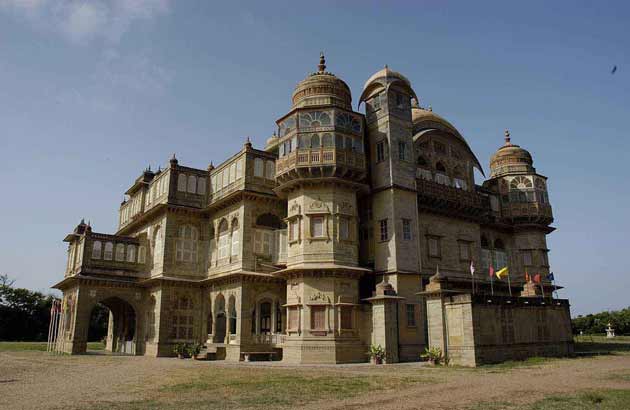
Bhuj
Bhuj connects you to a range of civilizations and important events in South Asian history through prehistoric archaeological finds, remnants of the Indus Valley Civilization (Harappans), places associated with the Mahabharata and Alexander the Great's march into India and tombs, palaces and other buildings from the rule of the Naga chiefs, the Jadeja Rajputs, the Gujarat Sultans and the British Raj. Over the 4000-year inhabitation of Kutch it developed trading and migratory relationships with ancient civilizations as far abroad as Zanzibar, the Middle East and Greece, fostering a unique ethnic mix of peoples and traditions in the region.
In a walk around Bhuj, you can see the Hall of Mirrors at the Aina Mahal; climb the bell tower of the Prag Mahal next door; stroll through the produce market; have a famous Kutchi pau bhaji for lunch; examine the 2000-year-old Kshatrapa inscriptions in the Kutch Museum; admire the sculptures of Ramayana characters at the Ramakund stepwell; walk around Hamirsar Lake and watch children jumping into it from the lake walls as the hot afternoon sun subsides; and catch the sunset among the chhatardis of the Kutchi royal family in a peaceful field outside the center of town.
Kutch has had four thousand years of inhabitation to build up a long and complex history, especially of its capital, Bhuj. The word kutch means “island” in classical Sanskrit, referring to the fact that in antiquity, the Ranns (meaning deserts) of Kutch were submerged by the Indus River flowing into the sea, leaving the area isolated by an immense shallow body of water. In 1819 an earthquake changed the topography and the Indus began to flow further westward, leaving the Ranns (now separated into the Great Rann and Little Rann) as a vast desert of saline flats. During heavy rains, the Ranns still flood, leaving islands, known as beyts, such as Khadir.
Some historians and archaeologists posit that the Harappans (also known as the Indus Valley Civilization) crossed the region by land, from the Indus River to the Sabarmati. Others doubt this, saying that the Ranns would have been permanently underwater at that time and crossing the deserts from Sindh would have to have been done further north. Either way, Harappan artifacts have been found in Khadir, making it one of the longest-inhabited regions of India. Bhuj is almost certainly mentioned in writings of two milennia ago; the writer Strabo (66 BC-24 AD) writes of Tejarashtra, whose principal city Tej is the modern-day Bhuj in all likelihood.
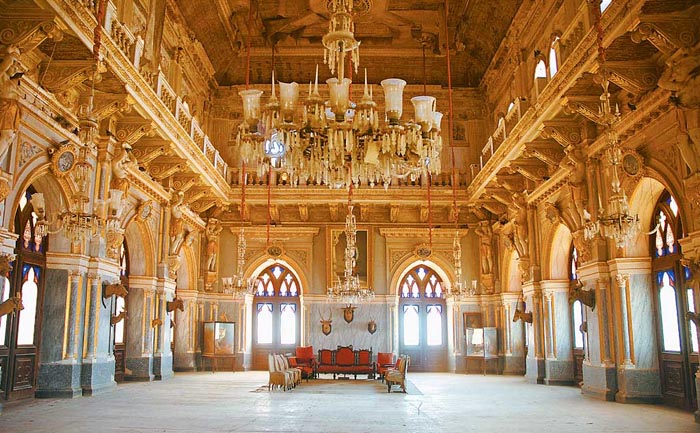
Aina Mahal
The Aina Mahal palace, or “Hall of Mirrors” was built during the flamboyant rule of Lakhpatji in the middle of the 18th century. Master craftsman Ramsinh Malam, who trained as an artisan for 17 years in Europe, felt unappreciated by lesser rulers in the area, so he went to the royal court at Bhuj and appealed to the king for work, who commissioned this palace. Malam designed it in a mixed Indo-European style and set about creating the materials for the palace locally. He established a glass factory at Mandvi, forged cannons in an iron foundry and manufactured china tiles in a factory in Bhuj. It seems Gandhiji's ideal of swadeshi had an early proponent in Ramsinh Malam. He personally crafted the fountains, mirrors and glasswork, as well as many other wonders of artisanship—a pendulum clock in sync with the Hindu calendar, doors inlaid with gold and ivory... come visit to find out the rest.
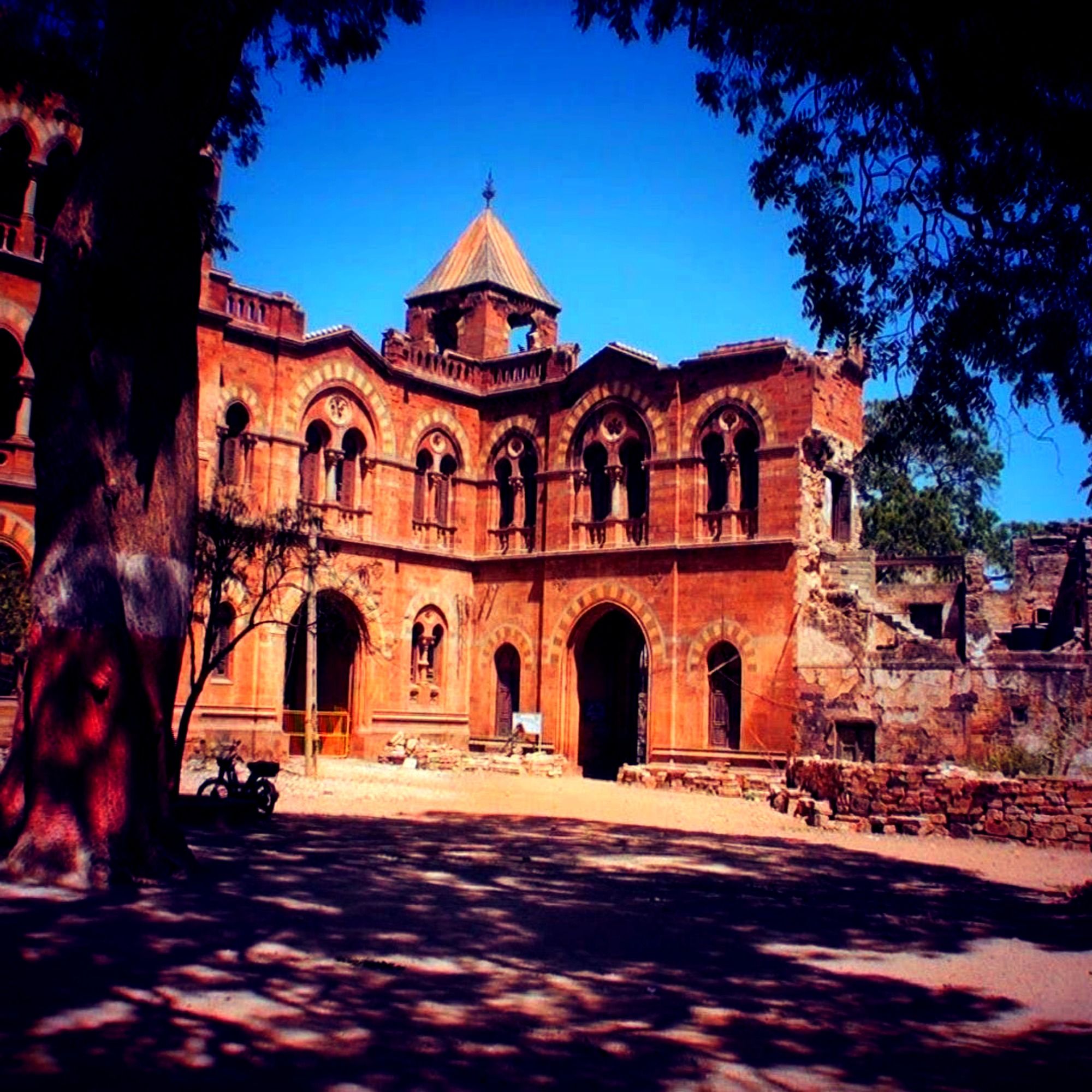
Prag Mahal
Next door to the Aina Mahal, in the same walled compound, is the giant Prag Mahal, which may at first seem slightly out of place at the far western edge of India, looking more appropriate in France. But then again, globalization is not a new phenomenon. This is a palace commissioned by King Pragmalji in the 1860s, designed by Colonel Henry Saint Wilkins in the Italian Gothic style and built in the middle of Bhuj next to the Aina Mahal.
While little about it may seem Indian, there are elements; see if you can find them. In the courtyard behind the palace, there is a small Hindu temple with very nicely carved stonework; the caretaker is sometimes available for more information. Inside the palace, you can visit the main palace halls as well as climb stairs of the 45m bell tower for an exhilarating view of the city. After coming down (not before, for your own peace of mind!), check out the cracks between the stones in the wall, visible from the courtyard, caused by various earthquakes over the years. Then stop for a glass of fresh sugarcane juice on your way out of the compound.
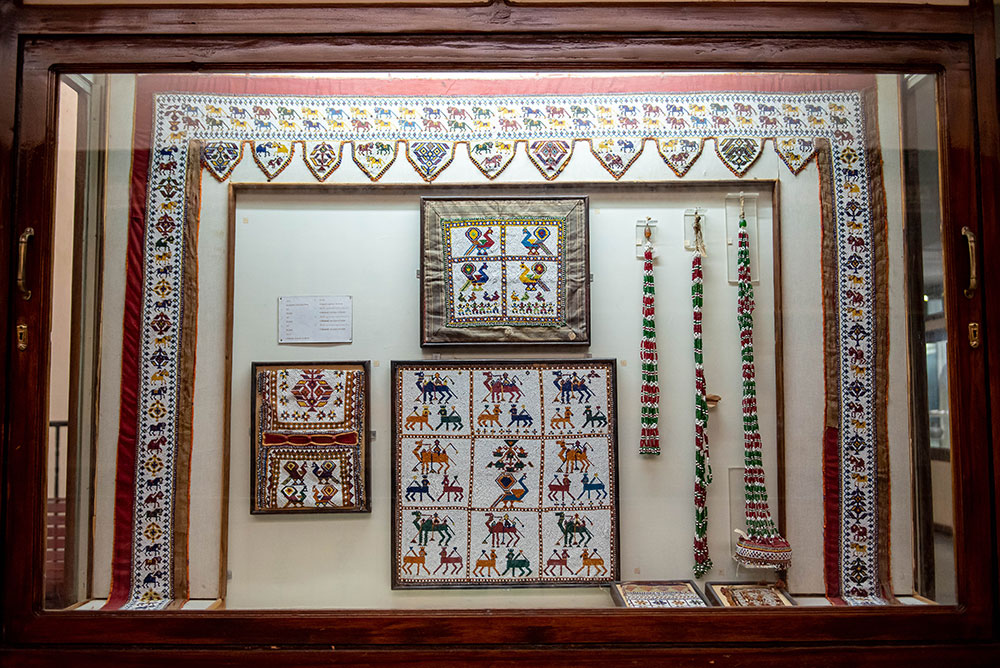
Kutch Museum
The oldest museum in Gujarat, founded in 1877 by Maharao Khengarji, it has the largest existing collection of Kshatrapa inscriptions, dating to the 1st century AD, as well as examples of the extinct Kutchi script (now the language is mostly written in the Gujarati alphabets) and an interesting collection of coins (including the kori, Kutch's local currency.) A section of the museum is devoted to tribal cultures, with many examples of ancient artifacts, folk arts and crafts and information about tribal peoples. The museum also has exhibits of embroidery, paintings, arms, musical instruments, sculpture and precious metalwork. A visit to the Kutch Museum, to learn about the history of tribal and folk tradition of the district, will help you get to know about present-day people and their lives. Remember that visiting a museum is a great way to learn about history, but tribals are not merely part of history, they are a major part of Kutch's (and India's) population and cultural identity today. Try to visit people's homes and families; a visit to a museum and a conversation with a real human being are not mutually exclusive, they are complementary, and if anything, the latter is the most important of all.
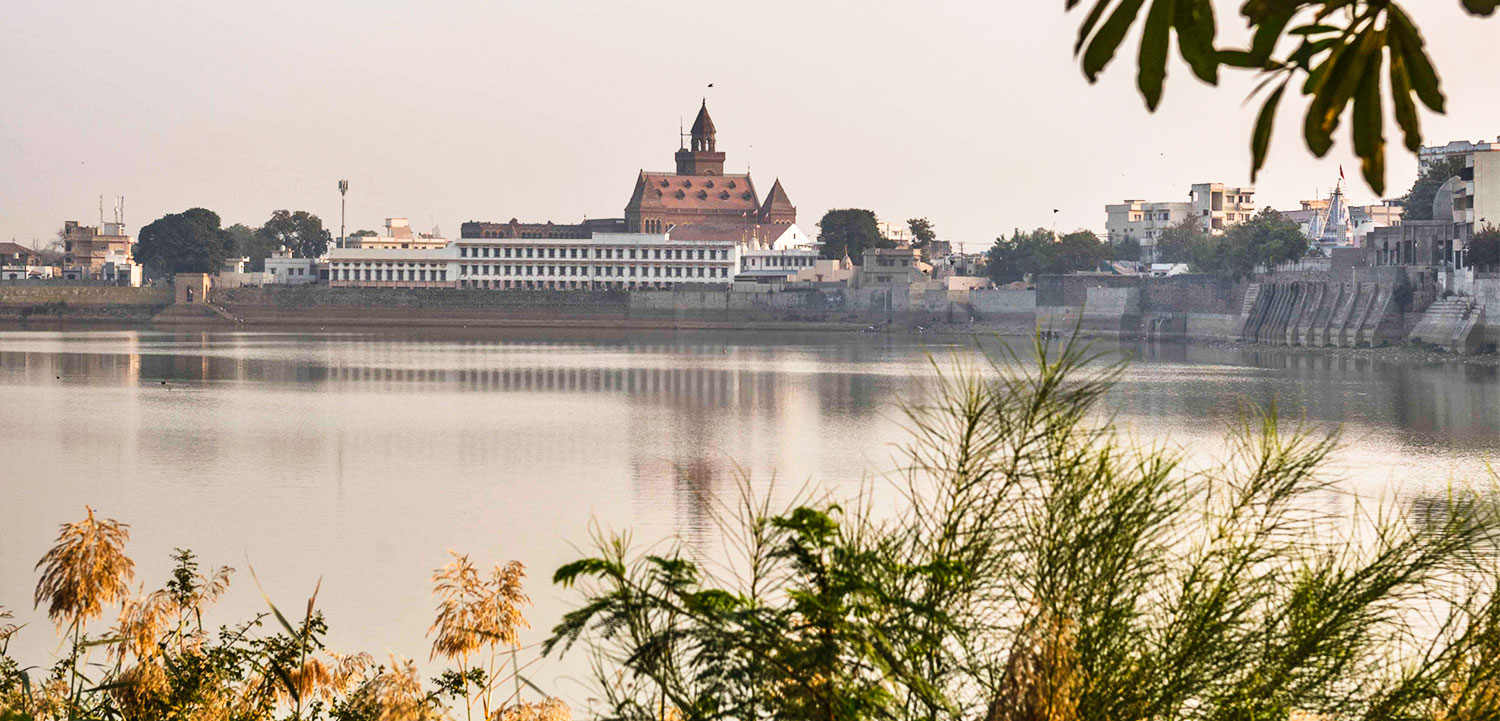
Hamirsar Lake
An excellent place to cool off on a hot afternoon, Hamirsar Lake is where people go to swim, or sit under a tree and enjoy the water, as well as where many women do their laundry. Walking along the lake's edge is a great way to get from one place to another, with the Aina Mahal and Praga Mahal, the Kutch Museum, the Ramkund Stepwell and Ram Dhun Temple, the Swaminarayan Temple and the Alfred High School all located very close to the eastern side of the lake; a walk from the Aina Mahal to the Swaminarayan Temple (passing all the other sites mentioned) takes about half an hour. Further around the other side of the lake is the Sharad Baug palace, and the road to the royal chhatardis.
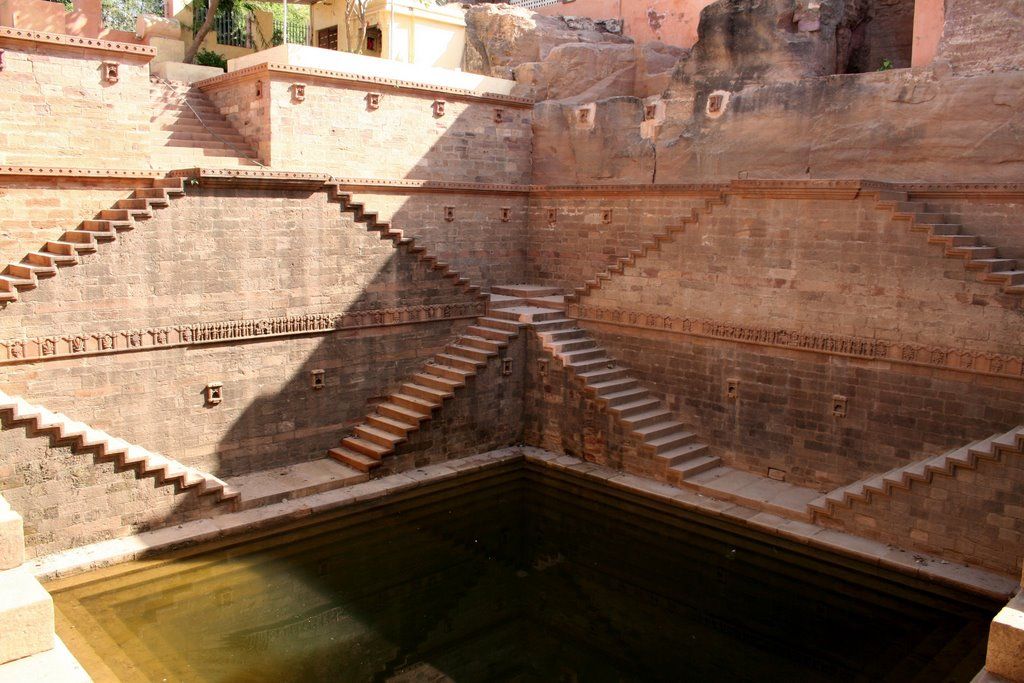
Ramkund Stepwell
Across from the Kutch Museum and behind the Ram Dhun Temple, the Ramkund well is a square stepwell, 56 feet on a side, with sculptures portraying characters from the Ramayana, such as Lord Ram, Devi Sita, Lakshman and Lord Hanuman, as well as the ten incarnations of Lord Vishnu along the walls. On your walk down to the water you experience a sudden calm and coolness not to be found on the road above and in the quiet, you can pause for a while to reflect on your experiences. The Ram Dhun Temple, just in front of the well, is also worth a quick visit.
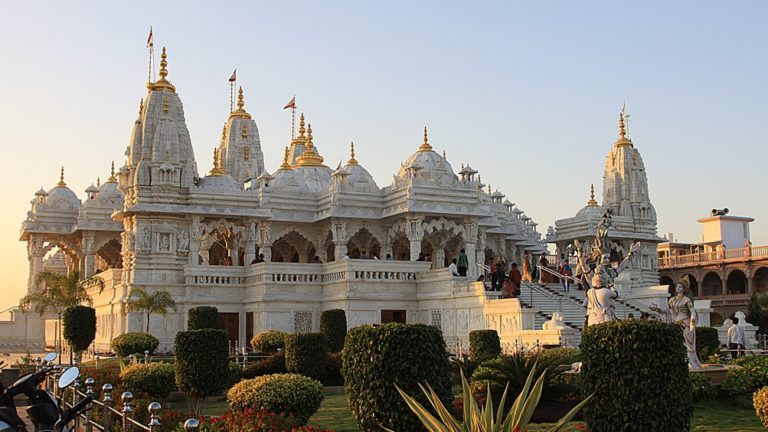
Swaminarayan Temple
Like most Swaminarayan temples, this one has the typical brightly colored woodcarvings around the building, mostly depicting Lord Krishna and Radha. Located just down the road from the Ramkund Stepwell and the Alfred High school, the temple marks the spot where Swaminarayan sat with local holy men when he came through Bhuj.

Handicrafts
Kutchi handicrafts, renowned the world over, are in abundance in Bhuj, from elaborately embroidered clothing and luxurious quilts to block-printing, heavy silver jewelry and woodcarving. Or better yet, you can use Bhuj as a base for excursions to surrounding towns and villages to meet artisans and their families, see the work being done and buy crafts directly from the artisans themselves. This allows more of the income to go directly to the craftsmen and more importantly, creates a relationship between the maker of an item and its eventual owner, in which each one meets the other, learns something about the other's life and shares a bit of their own identity and background. You will quite likely find the personal interaction more valuable than the commercial one and the memory of the visit will stay with you even if you give away what you bought as gifts.
How to Reach to Bhuj
By Air
One or more flights daily connect Bhuj to Mumbai.Once in Bhuj, ST buses go to larger destinations around the district, private jeeps can also be rented (a good option for larger parties), and some smaller places can only be reached by chhakdas.
By Rail
Two daily express trains, the Bhuj Express and the Kutch Express, go from Bhuj to Ahmedabad (8hrs) and on to Mumbai (16hrs.) However, both trains pass through Ahmedabad in the middle of the night, as the schedules are designed to depart and arrive and reasonable hours from Bhuj and Mumbai, not Ahmedabad.
By Road
For those traveling from Ahmedabad, the bus may be more convenient than the train, though slightly more expensive. Several private companies run sleeper buses (with a full horizontal bunk), leaving the city for Bhuj between 8pm and 11pm, arriving in Bhuj between 6am and 8am the next morning. These bus companies all have their offices around Paldi in Ahmedabad; Sahjanand Travels and Patel Travels are two recommended ones. There are also private sitting (non-sleeper) buses, and ST (State Transport) buses that make the trip for less money but considerably less comfortable seats.




Post ReviewPraising pain was born give you a complete.